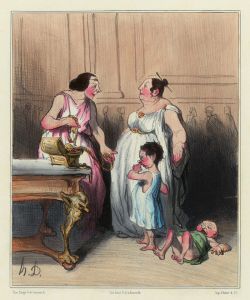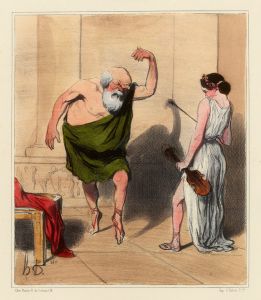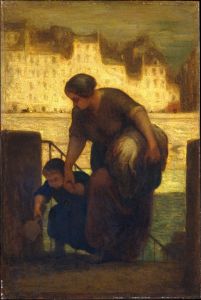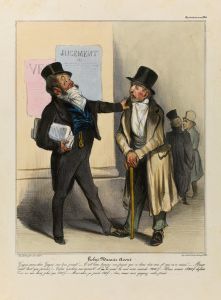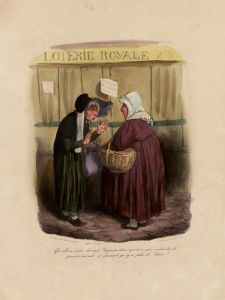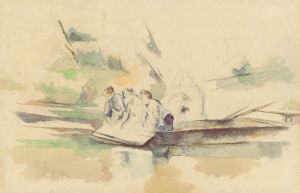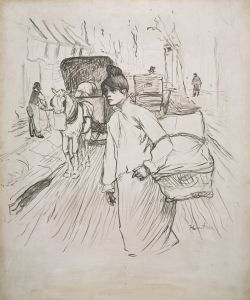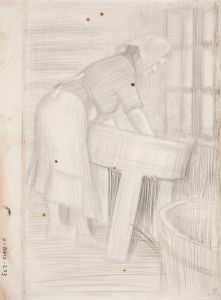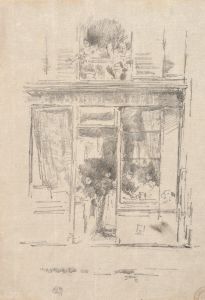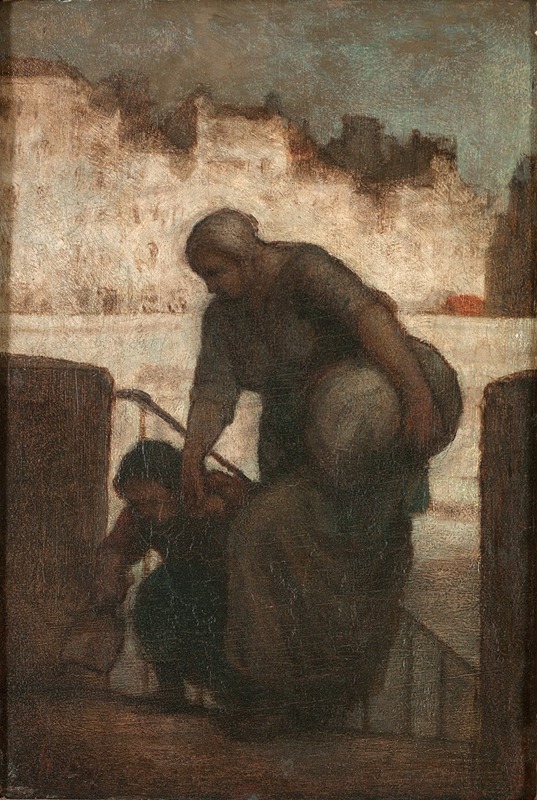
Une laveuse au Quai d’Anjou
A hand-painted replica of Honoré Daumier’s masterpiece Une laveuse au Quai d’Anjou, meticulously crafted by professional artists to capture the true essence of the original. Each piece is created with museum-quality canvas and rare mineral pigments, carefully painted by experienced artists with delicate brushstrokes and rich, layered colors to perfectly recreate the texture of the original artwork. Unlike machine-printed reproductions, this hand-painted version brings the painting to life, infused with the artist’s emotions and skill in every stroke. Whether for personal collection or home decoration, it instantly elevates the artistic atmosphere of any space.
Honoré Daumier, a prominent French artist known for his caricatures, paintings, and sculptures, created the artwork "Une laveuse au Quai d’Anjou" during the 19th century. Daumier's work often reflected the social and political landscape of his time, and he is celebrated for his keen observation and ability to capture the essence of everyday life in France.
"Une laveuse au Quai d’Anjou" translates to "A Washerwoman at Quai d’Anjou," and it is one of Daumier's notable paintings that depict the life of the working class. The painting portrays a washerwoman, a common figure in Daumier's work, engaged in her daily labor along the banks of the Seine River in Paris. The Quai d’Anjou is located on the Île Saint-Louis, one of the two natural islands in the Seine within the city.
Daumier's choice to depict a washerwoman is significant as it highlights the often-overlooked labor of women during this period. Washerwomen were a vital part of urban life, responsible for cleaning clothes for both private households and businesses. Their work was physically demanding and poorly paid, and Daumier's depiction brings attention to their toil and resilience.
The painting is characterized by Daumier's distinctive style, which combines realism with expressive brushwork. His use of light and shadow adds depth to the scene, emphasizing the washerwoman's form and the texture of her surroundings. Daumier's palette often included muted colors, which he used to convey the somber and gritty reality of the working class.
Daumier's work, including "Une laveuse au Quai d’Anjou," is often associated with the Realism movement, which sought to portray subjects truthfully without idealization. This movement emerged as a reaction against the Romanticism of the early 19th century, focusing instead on the lives of ordinary people and the social issues of the time.
Throughout his career, Daumier produced thousands of works, including lithographs, paintings, and sculptures. While he is perhaps best known for his satirical lithographs that critiqued politics and society, his paintings, such as "Une laveuse au Quai d’Anjou," demonstrate his ability to capture the dignity and humanity of his subjects.
Today, Daumier's works are held in high regard and can be found in major museums and collections worldwide. His paintings, including "Une laveuse au Quai d’Anjou," continue to be studied for their artistic merit and their insightful commentary on 19th-century French society.
In summary, "Une laveuse au Quai d’Anjou" by Honoré Daumier is a poignant representation of the working-class experience in 19th-century Paris. Through his realistic portrayal of a washerwoman, Daumier sheds light on the labor and lives of women who played an essential role in the urban economy. His work remains a testament to his skill as an artist and his commitment to social realism.






